Discover 11 hidden attractions, cool sights, and unusual things to do in Thomasville (United States). Don't miss out on these must-see attractions: Lapham–Patterson House, Pebble Hill Plantation, and Dawson Street Residential Historic District. Also, be sure to include The Big Oak in your itinerary.
Below, you can find the list of the most amazing places you should visit in Thomasville (Georgia).
Table of Contents
Lapham–Patterson House
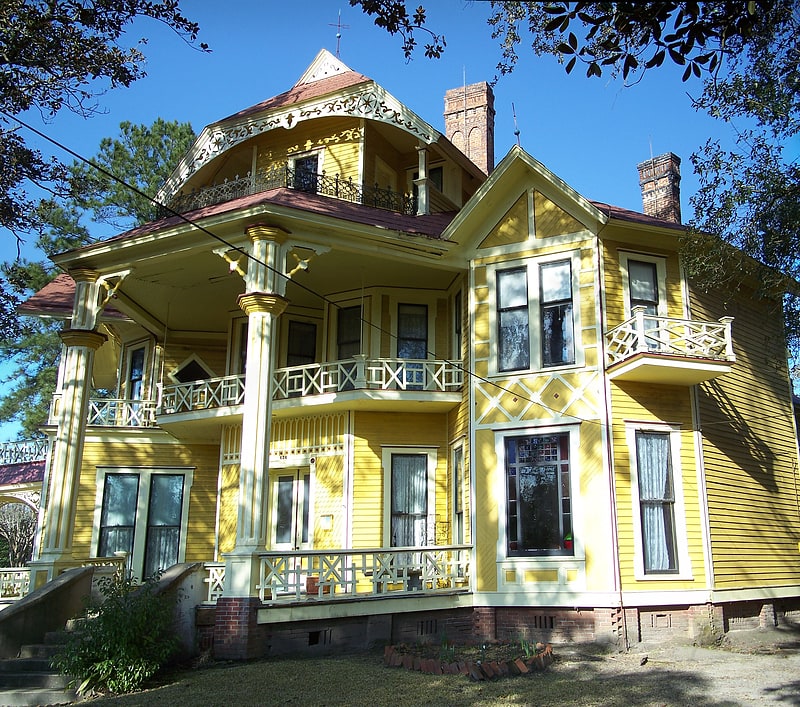
Building in Thomasville, Georgia. The Lapham–Patterson House is a historic site at 626 North Dawson Street in Thomasville, Georgia. The house, built between 1884-85 as a winter cottage for businessman C.W. Lapham of Chicago, is a significant example of Victorian architecture. It has a number of architectural details, such as fishscale shingles, an intricately designed porch, long-leaf pine inlaid floors, and a double-flue chimney. Inside, the house was well-appointed with a gas lighting system, hot and cold running water, indoor plumbing, and modern closets. Its most significant feature is its completely intentional lack of symmetry. None of the windows, doors, or closets are square. The house is a Georgia Historic Site and is also a National Historic Landmark, designated in 1973 for its architecture. It is also a contributing building in the National Register-listed Dawson Street Residential Historic District.
The three-story structure has a mellow-yellow exterior with brick-red roof and chimneys. At the core of the house is a hexagonal-shaped room. There are at least 50 exits; Mr. Lapham had been in the Great Chicago Fire and subsequently became paranoid about being trapped in a burning building.
The house was deliberately constructed slightly askew to take advantage of sunlight entering the third floor during the Spring and Fall Equinoxes. Within is a gentlemen's parlor with a small stage featuring a stained-glass window in the center. In the fretwork outside the room over the balcony are animal and amorphous shapes cut into the wood. In the center is a cutout of what is presumably the head of Mrs. O'Leary's cow.
During the Spring and Fall Equinoxes the patterns are projected by sunlight onto the floor through the glass. The total effect is that, in the center of the stained glass window's colorful pattern on the floor, the shadow of the cow's head can be seen.
Mr. Lapham was a Quaker.[1]
Address: 626 N Dawson St, 31792-4449 Thomasville
Pebble Hill Plantation
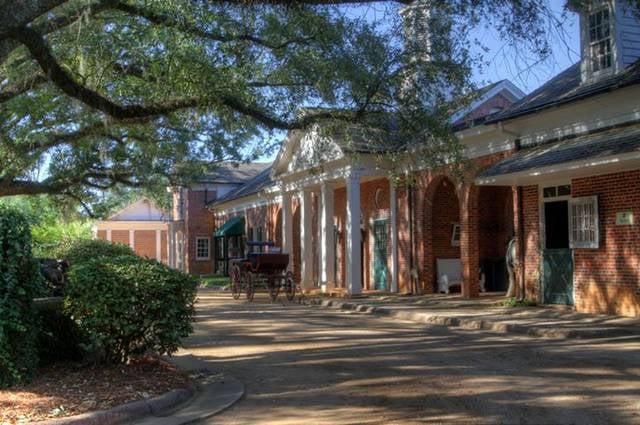
Museum in Thomas County, Georgia. Pebble Hill Plantation is a plantation and museum located near Thomasville, Georgia. The plantation is listed on the National Register of Historic Places.[2]
Address: 1251 US Highway 319 S, 31792-0496 Thomasville
Dawson Street Residential Historic District

The Dawson Street Residential Historic District, in Thomasville, Georgia, is a 200-acre historic district which was listed on the National Register of Historic Places in 1984. It then included 380 contributing buildings and three contributing sites.
It is located to the north of the city's commercial center and its courthouse square. As well as houses, the district includes several churches, two historic cemeteries (one for whites and one for blacks), a historic city park, and pecan orchards associated with some of the houses.
It includes two properties already separately-listed on the National Register:
- Hardy Bryan House (or Carter House), 312 North Broad Street, a Greek Revival house built by a carpenter/builder which is believed to be one of the earliest surviving houses in Thomasville;
- Lapham-Patterson House (1885), 626 North Dawson Street, a National Historic Landmark.
Also notable in the district are:
- several rare examples of single pen houses on Broad Street and Lutten Lane
- Hardeway House (1856), 526 North Dawson Street) designed by builder/architect John Wind
- 312 North Dawson Street (1905), a "concrete stone" structure built as the administration building for Young's Female Academy.
The Big Oak

Historical landmark in Thomasville, Georgia. The Big Oak is a large live oak located in Thomasville, Georgia, in the United States at the corner of Crawford Street and Monroe Street. The Big Oak is one of many historic landmarks located in Thomasville. The Big Oak was one of the earliest trees registered with the Live Oak Society. Registered by P.C. Andrews in 1936, the Big Oak was the forty-ninth live oak registered. At the time of registration, the Big Oak's girth was 21 feet 6 inches.[4]
Address: 124 E Monroe St, 31792-5141 Thomasville
Thomas County Courthouse
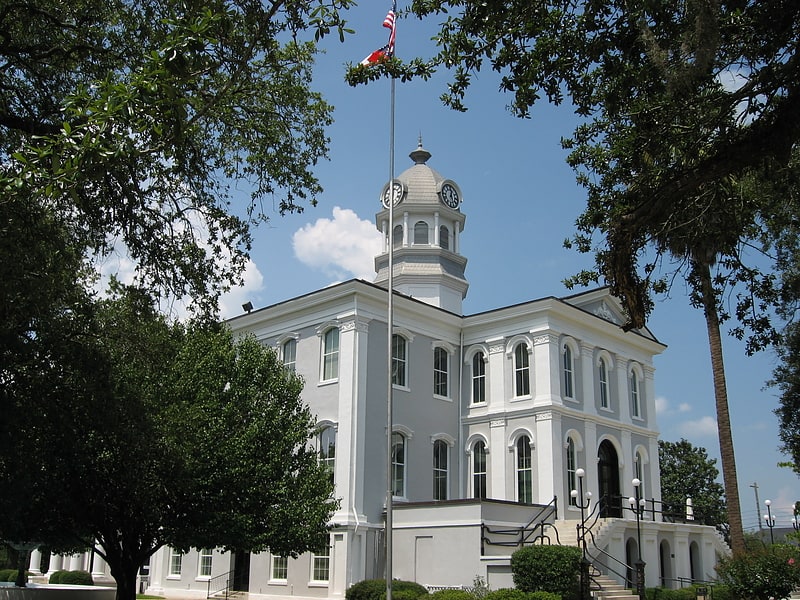
Building in Thomasville, Georgia. The Thomas County Courthouse is an historic government building built in 1858 and located on North Broad Street in Thomasville, Georgia, the seat of Thomas County. It was designed by architect John Wind.
It was added to the National Register of Historic Places on June 22, 1970.
It is also a contributing building in the NRHP-listed Thomasville Commercial Historic District.[5]
Address: 255 North Broad Street, Thomasville
Church of the Good Shepherd

The Church of the Good Shepherd, on Oak Street in Thomasville, Georgia, dates from 1908. It was listed on the National Register of Historic Places in 1987.
The listing included three contributing buildings: the church (1894) and a parish hall that form a U-shaped complex, plus a vicarage (1908). The parish hall was built in 1896 and modified in 1907-1912 and in 1923.[6]
Gordon Avenue Apartments

The Gordon Avenue Apartments is an apartment building at 424 Gordon Avenue in Thomasville, Georgia which is listed on the National Register of Historic Places.
It is a Tudor Revival building designed by Atlanta architects Daniell and Beutell and built in 1929.
Note that Gordon Avenue Historic District, an NRHP-listed district consisting of five houses and their grounds, is further out Gordon Avenue.[7]
Thomasville Commercial Historic District
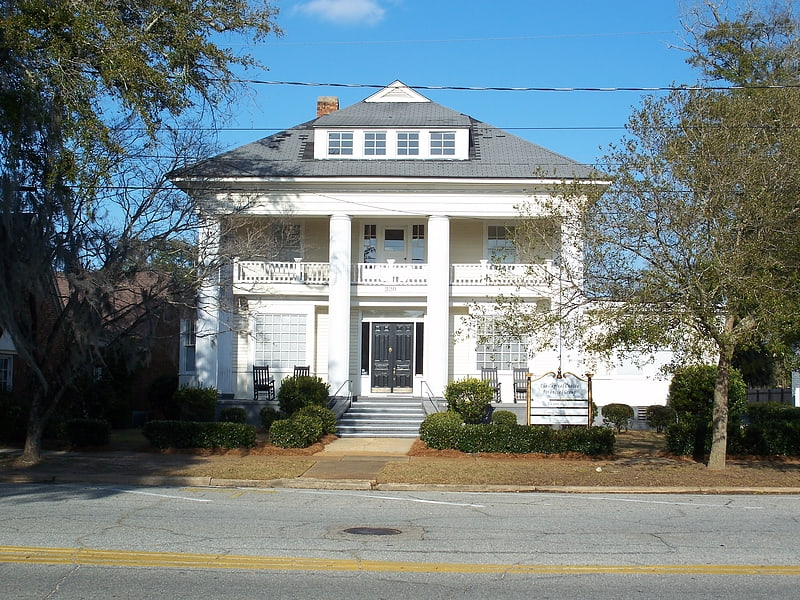
Thomasville Commercial Historic District is a historic district that was listed on the National Register of Historic Places in 1984 and was both increased and decreased in 2004. The modified district, about 60 acres in size, then included 123 contributing buildings, three contributing structures, and a contributing object, as well as 65 non-contributing buildings.
The district consists primarily of one- and two-story commercial buildings built between 1880 and the 1940s.
It has a number of buildings dating back to the 1880s. For the historic district the Thomasville Main Street Program helped raise over $44 million for the district.
The district includes:
- Thomas County Courthouse, 225 North Broad Street, separately NRHP-listed
- Thomasville Depot, separately NRHP-listed (three contributing buildings; within the 2004 increase)
- B'nai Israel Synagogue, separately NRHP-listed (within the 2004 increase)
- Hollybrook Building - Brokerage Exchange built in 1882
- Lapham-Patterson House
- Thomasville Cultural Center
Fletcherville Historic District
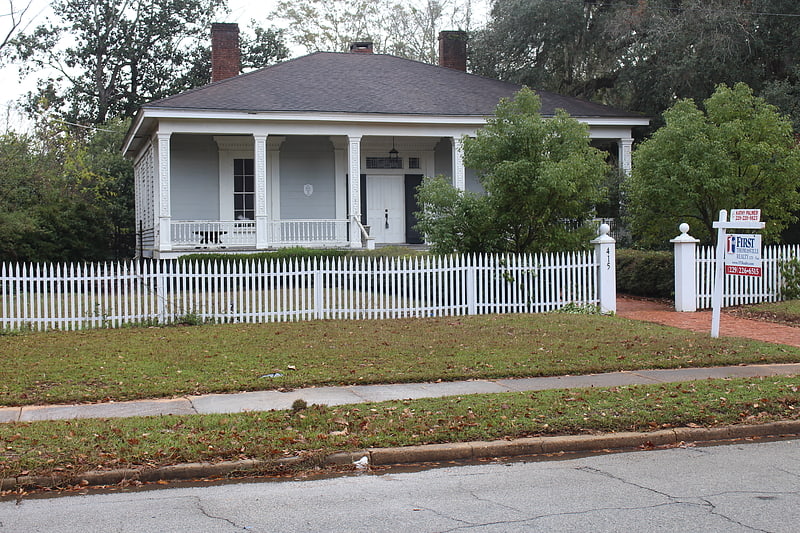
The Fletcherville Historic District is a 38 acres historic district which is roughly bounded by Siexas, Wright, S. College and W. Jackson St. in Thomasville, Georgia. It was listed on the National Register of Historic Places in 1985.
The oldest houses in the district are along South College Street and Fletcher Street facing what was formerly a square at the center of Fletcherville. The square originally was the site of the Fletcher Institute and is now the location of Harper School, and with its open area it remains "a significant landscape feature of the district."
The district includes the Arthur P. Wright House at 415 Fletcher Avenue, in the next block up from the square, which is separately listed on the National Register.
Predominant architecture is Bungalow/Craftsman, Greek Revival, and Victorian Eclectic. Most of the buildings in the district are modest one-story wood-frame houses. Examples of two-story houses are at 427 Fletcher, 126 College, 519 West Jackson, and 116 Siexas. Many houses have a front porch or portico with bracketed posts or Doric or Ionic columns. Some have dormer windows or Palladian windows.
The district also includes some non-contributing buildings including two modern church complexes, the Harper School, and several non-historic houses.[9]
Tockwotton-Love Place Historic District
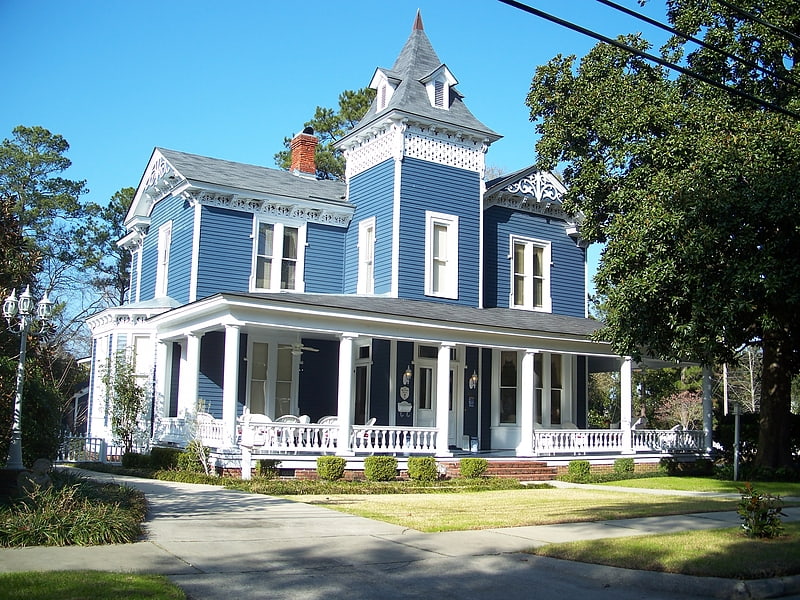
The Tockwotton-Love Place Historic District in Thomasville, Georgia is a historic district which was listed on the National Register of Historic Places in 1984.
The district then included 80 contributing buildings with relatively few intrusions or non-historic buildings. It includes two residential neighborhoods bisected by Remington Avenue: Love Place to the north and Tockwotton to the south.
Among its historic properties are:
- 331 Remington St. is striking with a two-story portico having a second floor porch, intersected by a first-floor full-length porch (see #11 in accompanying photos).
- "The Paxton", a historic house hotel, at 445 Remington Avenue, at the corner of South Hansell St.
- The antebellum Augustine Hansell House, at 429 South Hansell Street, is separately listed on the National Register.
Ephraim Ponder House
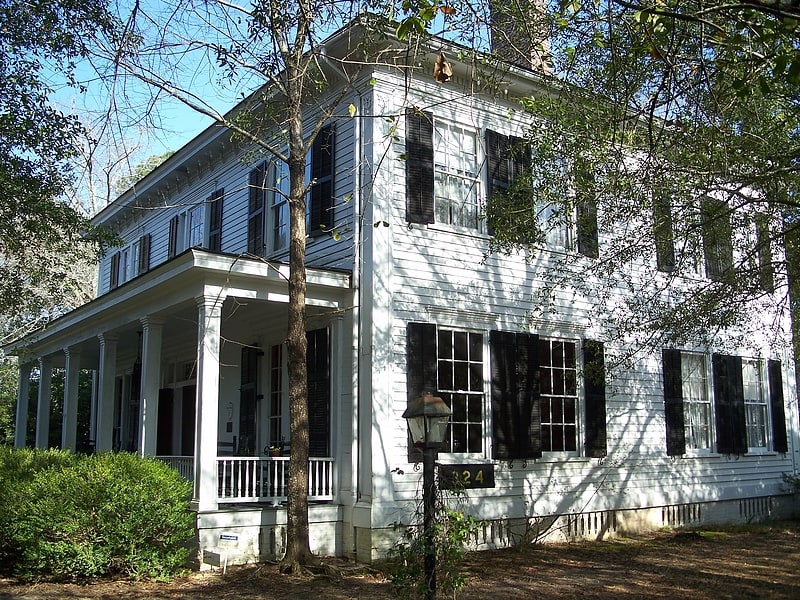
The Ephraim Ponder House in Thomasville, Georgia, also known as the Sholar House, was built c.1854-56 It was listed on the National Register of Historic Places in 1970.
It was built by Epraim Ponder, and served part of old Young's Female College in Thomasville in 1869 and latterly as home of the president of the old College. At the time of NRHP listing it was owned by John Sholar and wife.
Its south facade is Greek Revival in style and faces the former Female College property.[11]